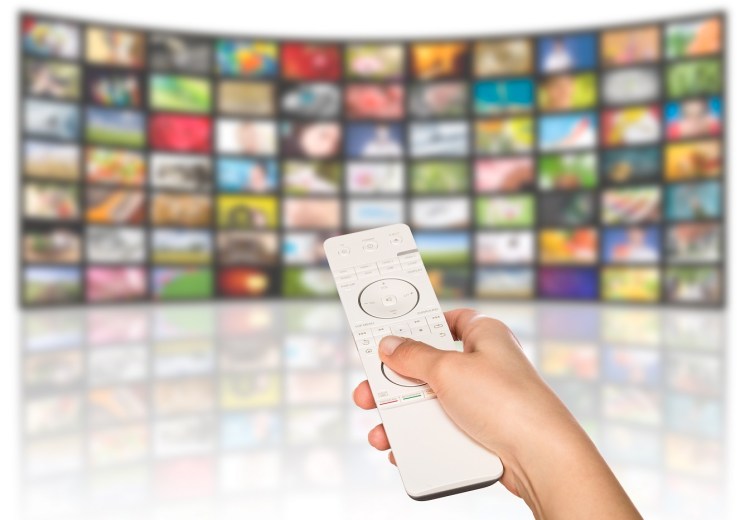Amid all the conversation about shifts in television viewing and how that’s affecting TV advertising, there’s been a lot of talk about networks trying to woo back viewers with fewer (and perhaps more compelling) ads.
Reduce the ad loads, the theory has been, and fans will be more likely to watch shows when they’re broadcast instead of hours or days later, on a different distribution platform that may not carry ads or makes it easy to skip them. Watching the initial broadcast can avoid or at least reduce the trend we’ve seen for a while now of ads being decoupled from the show they were initially attached to.
So, are networks reducing the number of ads they’re running? Not much so far this year, for most of them, most of the time.
My company, iSpot, looked at average ad loads during prime time for the five broadcast networks and 26 of the biggest cable channels, comparing the last quarter of 2015 to the first quarter of 2016 to see if we saw any trends. We also removed from the numbers any promotions of their own network’s programming.
Among the broadcast networks, the CW cut its ad load noticeably, about 6 percent. The CW is also the broadcast network with the youngest, most digitally savvy and social-media connected audience. Given that audience and its expectations, CW may be feeling more pressure to minimize ad loads than some other networks whose older audiences may be more inclined to stick around.
That certainly seemed reflected in the broadcaster numbers. CBS had a slight decline, ABC and Fox were basically flat, and NBC’s ad loads rose 6 percent. Fox had the highest loads among the five, with just over 15 minutes per hour of ads, while the CW dipped below 11.
Overall, that’s no downward trend, especially during a quarter when there were lots of season premieres of marquee shows, alongside some of the year’s most-watched special programming (Super Bowl, Oscars, Grammys, NCAA basketball tournament, etc.). Those big events might have been an opportunity to reduce ads to help keep audiences coming back for other programming, but we didn’t see that reflected in the overall numbers.
Among the cable properties, what movement we saw was largely towards more ad time. Fox News, like its broadcast corporate cousin, had the highest ad loads among its competition. But it was also one of the few to cut ad loads quarter over quarter, though it remained above 16 minutes per hour.
Just behind Fox with the highest loads were four Viacom-owned channels: Comedy Central, MTV, Spike, and BET. All four saw their ad loads rise significantly in Q1, as did a fifth Viacom network, VH-1, though its load is now roughly the same as AMC, Animal Planet, USA Network, Discovery, and the History Channel, at a little over 14 minutes per hour.
On the other end of the spectrum is ESPN. Though its many hours of prime-time live sports complicate an apples-to-apples comparison with the other channels, ESPN’s load rose to just more than 8 minutes per hour in Q1.
Among the cablers, only five networks cut their ad loads in the period. Five more were roughly flat. Sixteen others increased their ad loads.
Are some cuts in ad loads being made? Yes.
Our data shows that among cable channels, for some shows, some load reduction has happened, usually in special circumstances. For instance, Fox-run National Geographic said it is cutting ad loads on its new series by 25 percent and will accelerate the move in the fall.
NatGeo already cut ads by 50 percent for its just-concluded Morgan Freeman-hosted series “The Story of God.” The move was a bid to get new audiences to come back and try other programming. In the case of “God,” it may have paid off: The network enjoyed its best ratings ever.
Viacom’s networks and Turner Broadcasting’s TruTV also have said they will reduce ad loads, though all those networks, and National Geographic too, saw ad loads rise during the first quarter. NBC said it would cut ads during “Saturday Night Live” and do more branded content. Again, it too raised prime-time ad loads in the first quarter, though it just presented its first cross-network unified pitch at this year’s upfronts while proclaiming TV’s enduring power compared to online competition.
Overall, for the 31 biggest broadcast and cable outlets, the numbers are telling: Seven networks dropped prime-time ad loads, seven more were flat, and 17 rose. Lower ad loads may be coming, but they haven’t arrived yet.
Sean Muller is CEO and founder of iSpot.tv, a real-time TV advertising measurement company.
VentureBeat's mission is to be a digital town square for technical decision-makers to gain knowledge about transformative enterprise technology and transact. Learn More

